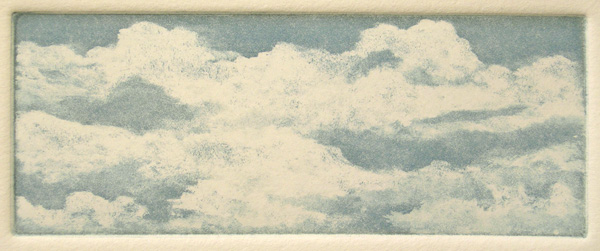| Soap Substitution: The recipe for PG-11 (page 165) calls for Ivory Soap. If Ivory Soap is not available substitute any similar soap, i.e. any simple basic bar soap commonly used for washing babies, or adults with sensitive skin or chemical allergies. The quantity of soap in the recipe may need to be adjusted. See "Simple Tests" on page 5. If the ground has too much "flow" (spreads and bleeds too much) add more butter and if it is too greasy, add more soap. |
| Controlling Permeability: Some further experimentation has suggested alternative materials that may be useful as agents which can be added to PG-11 to increase permeability. In the book addition of glycerin to PG-11 is discussed as a way to increase permeability. This is effective, but also gives the ground a soft greasy consistency which may or may not be desired. The book suggests 1 to 3 and 1 to 4 mixtures (by volume) of glycerin to PG-11. I have recently been experimenting with a 1 to 6 mixture of glycerin to PG-11 and have found it to be an excellent general purpose permeable ground and my current favorite (used on top of a rosin aquatint) for getting cloud and mist effects.
Gum Arabic (liquid) in a ratio of about 1 part gum arabic to 1 or 2 parts PG-11 effectively increases permeability and works well in general. Tends to make grounds crack while drying and peel off of the plate. Not recommended for uses involving heat. Diatomaceous earth, in the ratio of approx. 1 volume of PG-11 to 3 volumes of diatomaceous earth is a good permeability booster. The ratio can be adjusted to suit individual requirements. It works well in the same ratio to boost the permeability of Cassara recipe White Ground as well. Magnesium Carbonate also works in the same ratio range as a permeability booster for PG-11 and White Ground, though it is more effective with White Ground than with PG-11. The ground dries to a dry, chalky consistency. Watch for bubbles as it etches, as these may leave patterns in a tone. If bubbles are seen, lift the plate out of the bath to momentarily allow the etchant to drain off. This will remove the bubbles. |
| More on Controlling
Permeability: I experimented with a series of common pottery clays and clay/glaze additives and found that several types of clay work well with PG-11 to boost permeability and give softer effects. Since it works well and is one of the most common and readily available clays, I chose to focus mainly on OM #4 Ball Clay. This clay when mixed with PG-11 produces a ground that not only has increased permeability but also has a nice (haven't tested this thoroughly)brushable consistency and works well with an airbrush. These clays are typically available in dry powdered form. Try adding one volume of PG-11 to three volumes of the dry clay powder and mix thoroughly. Add just enough water and continue mixing until you get the desired consistency. PG-11 and clay mixtures make a ground that is easy to work with in that it behaves similarly to unaltered PG-11 in ferric chloride and in vinegar, and when being rinsed in water after etching.. As the amount of clay in the mixture increases, the resulting ground becomes more permeable but also more physically fragile. The limit for the amount of clay in the mixture seems to be about one part PG-11 to six parts of clay. At that point the resulting ground is so fragile that though it works well most of the time, there is a risk of it flaking off in vinegar or in rinse water. (Other clays/additives I tried were Gold Art-medium range beige clay; Foundry Hill-high fire gray clay; Bentonite-clay additive for suspension; Hawthorn Bond-high fire gray clay; Red Art-lo fire red clay; EPK Kaolin-very high fire China clay; Spodumene-glaze additive; and Talc. Clays from this group that worked well to boost permeability with PG-11 were Gold Art, Foundry Hill, EPK Kaolin and Hawthorn Bond. Bentonite boosts permeability, but the mixture doesn't blend and feather as well as the other clays and tends to create a "plastery" looking effect rather than a "cloudy" effect. EPK Kaolin is also a very common and readily available clay, a good permeability-booster and brushes well but doesn't work well with an airbrush.) |
| Shelf-life I haven't seen PG-11 grow mold, but it will eventually dry out in the jar and once this is allowed to happen it develops a chalky quality and even after water is added it isn't the same as when fresh. Prevent this by checking it periodically and adding a little bit of water if it is looking too dry. I believe that unless you want the physically hardest formulation (unaltered PG-11), it is a good idea to add a small amount of glycerin to the basic recipe; say one part glycerin to 10 or 15 parts PG-11. This gives good handling (flow/brushability) characteristics and I think improves shelf-life by keeping it from drying out completely and making it easier to mix in some water if it does get too dry. For long term storage you can keep it in a refrigerator. Put a small plastic jar of ground inside a larger jar with a tight-fitting lid, and leave a damp paper towel along with the small jar inside the larger one. |
Airbrush This is a good way to filter small quantities of thinned mixtures for use in an airbrush. Get a 3/4 oz or so plastic syringe. Pull the plunger out, insert a small wad of cotton or polyester fiber into the barrel of the syringe and press it into the end of the syringe with the plunger. Remove the plunger again and dump the mixture into the syringe. Put the plunger in and force the mixture through the wad of fiber. Cotton is an effective filter material, but tends to compact and clogs more easily than polyester fiber. Mixtures need to be pretty thin to go through an airbrush, but you don't want to thin them more than necessary. If a mixture doesn't want to go through an airbrush you can try using more air pressure or you can thin the mixture. If you are using an airbrush to create an aquatint, consistency (viscosity) and amount of air pressure are how you control the dot size of the aquatint. 20 pounds per square inch (psi) is a good average air pressure to use with an airbrush. A lower pressure/thicker liquid will make larger droplets and a higher pressure/thinner liquid will make finer ones. You probably don't want to use more than 50 or 60 psi with an airbrush. |
| Tempera
Paint Lately I've been experimenting with using tempera paint as a permeable ground. Turns out it works very well. I developed two recipes for egg tempera grounds, and tested six colors of commercial tempera paints I happened to have on hand. I will list the two recipes for the egg tempera grounds (one for yolks and the other for whites), and the results of the tests done on the six commercial tempera paints (and others) below. The test grounds were applied on top of a rosin aquatint on copper and etched in ferric chloride for about 6 minutes. They can be removed with soap/scouring powder and water, or with alcohol. Do not place egg tempera grounds in vinegar prior to etching; it will just make them tend to come off. However, I would recommend dipping the plate in vinegar prior to applying the ground to clean the plate, and if an area on the plate needs to have ground removed thoroughly from it some vinegar in a brush or swab is useful in getting it all off without creating unwanted patterns or perimeters. Do not add gum arabic to these, as it will cause them to crack as they dry and flake off of the plate. Recipe for egg tempera ground, using yolks:
Recipe for egg tempera ground, using whites:
|
| Casein After experimenting with tempera paint I wanted to see if casein would also work as a binder for a permeable ground, and it does. Casein (a protein substance extracted from milk) apparently has been around for 9,000 years or so as a binder for paint but is not much used today, though it is still available as a type of paint (Google "casein" or "milk paint"). It's also available in countless other forms for other purposes. In keeping with my practice of keeping things as generic as possible I developed a recipe for a casein-based ground using 100% pure unflavored micellar casein, a nutritional protein supplement. (You can extract your own from milk, if you want to.) Following is a recipe for casein-based permeable ground. Parts are by volume. 1 part powdered casein 2 parts dry titanium white pigment 1/12 part Borax 3 parts water Mix the three dry ingredients, then add the water and mix. Let it sit overnight, by which time it will gel into a semi-solid. (Don't add more water, it will get runnier after sitting for a day or two.) Mix thoroughly or mull, and it will be ready to use. Thin with water. Remove with water and dish soap, scouring powder, vinegar-salt solution, or a 1 to 9 dilution of ammonia with water. For a less permeable version use 1 part pigment and for a more permeable version use 3 parts pigment or experiment with adding some of the commercial water-soluble paints mentioned below. Unlike the other recipes (PG-11 and the egg-recipes) which tend to thicken over time, this casein recipe gets runnier after a week or two in the jar. This can be countered by leaving the lid off of the jar for a while. As with the egg tempera above, the binder is perishable so shelf-life is something to watch. The Borax is a preservative and seems to effectively prevent spoilage. Without it you have two or three days before noticing an offensive odor and decomposition. I have some grounds that have been sitting out at room temperature for about two months and seem to be doing fine. Refrigeration would probably be advisable. With regard to casein, I believe the proprietary/commercial artists' paints discussed below work about as well as this recipe as a permeable ground, so depending on cost and availability it might make sense to just buy some casein paint. |
| Commercial
Water Soluble Artists' Paints In connection with doing the above experiments I also experimented a little bit with commercial water soluble paints to see if they would work as a permeable etching ground. Almost all of them do and some work quite well. "Working well" means they have good brushability qualities on copper, are hardened by immersion in ferric chloride so they can be rinsed in water without dissolving, and are permeated by the ferric chloride at a rate that would make them reasonably easy to use for creating a wide range of values on a plate.
I have the impression that pretty much any non-synthetic water-soluble paint will work to some degree as a permeable ground and that all of these are compatible and can be mixed with each other as desired, though I have not experimented with this. |
Back to PG-11 Page
